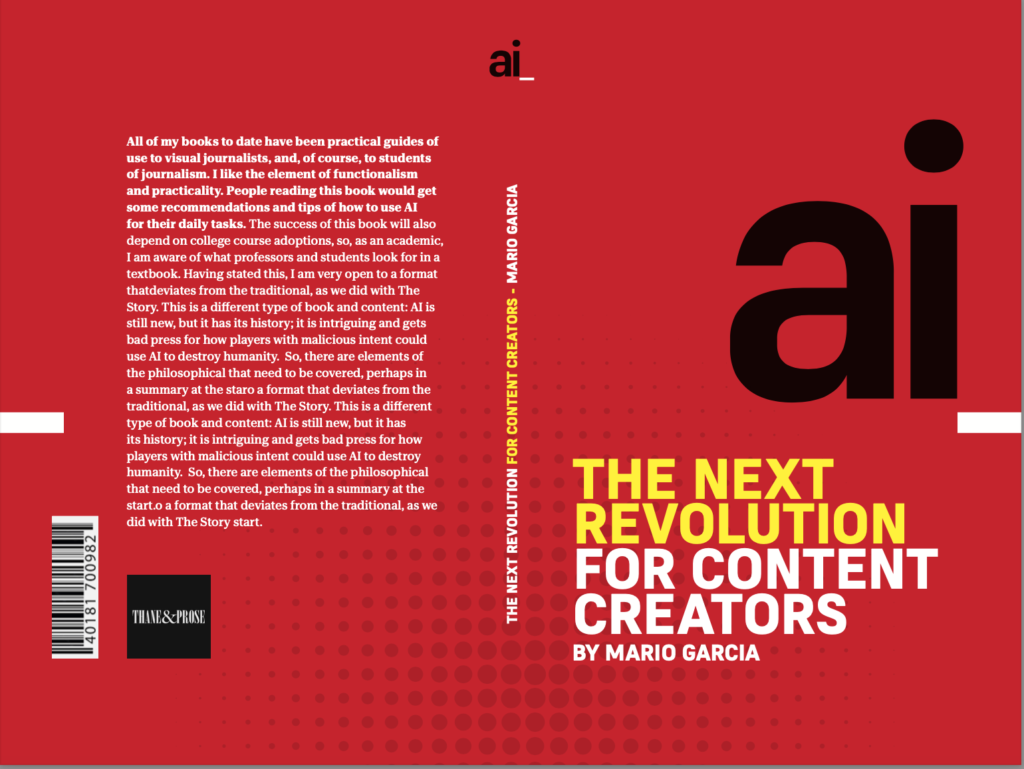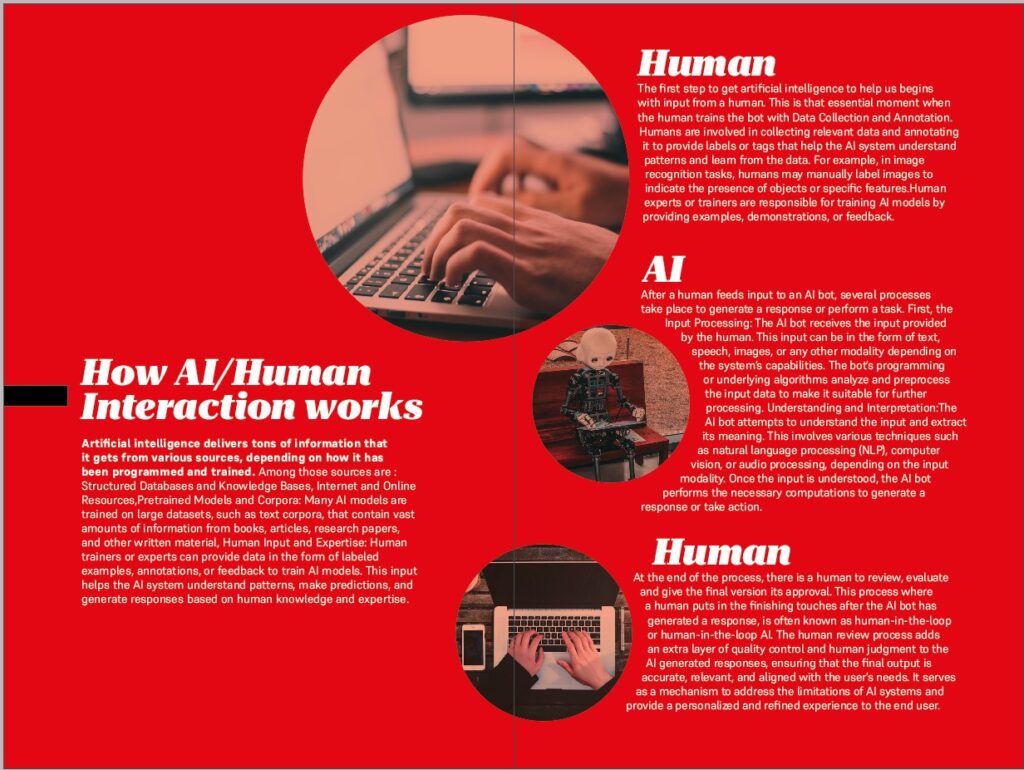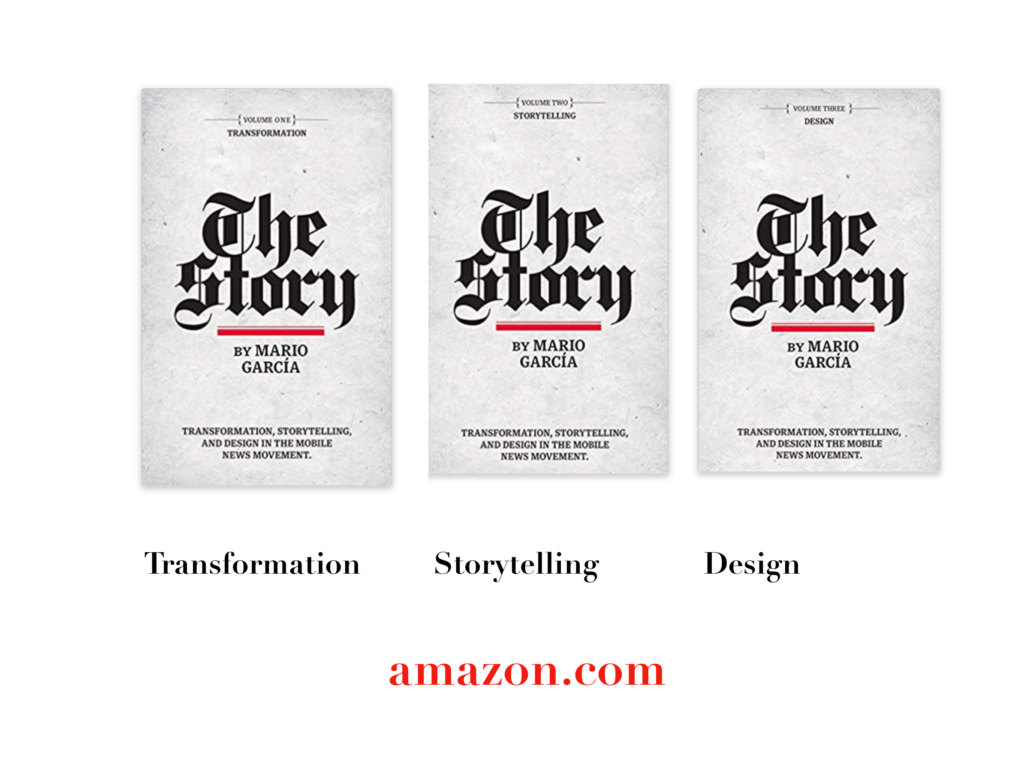When Neal Thane Boulton, publisher, Thane & Prose, contacted me, he was direct and to the point:
Mario, AI: what’s your take? Is there a book there? If you feel you have something to share with the world I’ll publish it asap.
Thane & Prose published my last book, The Story (2019), so I knew about working with Neal and that if he decides to publish a book, it’s going to be a go. Fortunately, and serendipitously, I had been researching artificial intelligence in its various manifestations —and controversies– as a way of preparing material for when I teach my Columbia course next Spring semester.. I had already realized that one can’t teach a journalism course —or any subject, for that matter–without references to AI and how it is forever changing the way we live, learn and work.
The ton of research material I had sorted into files on my desktop for months came in handy, and so right now I am in the midst of writing a book tentatively titled: AI-The Next Revolution for Content Creators, although we may just go with The Next Revolution. I have been writing five to six hours per day, spending considerable time talking to a variety of experts, and working with my design team on the book’s design concept.
Our design team at Garcia Media, with senior art director, Rodrigo Fino, in charge, came up with a cover concept that you can see here. Perhaps this will be THE cover, but we continue to experiment with various options while the book gets written.

The fun, the doubts and the fears
Researching this AI book continues to be fascinating. My book is NOT a love letter to artificial intelligence. I want it to be a guide for understanding AI and how we can benefit from what it can do.
Meanwhile, my mailbox is bringing me a mixed bag of reactions to the news that I have embarked on this project. For example:
“Mario, I can’t believe you are devoting time to writing about artificial intelligence. It will take so many jobs from humans.”
OR
“Don’t be the poster boy for artificial intelligence, Mario. It is full of inaccuracies, unethical decisions, biased pronouncements. Not worthy of someone like you writing about it.”
Of course, I also have dozens of messages of people who are encouraging and who say they are experimenting with AI at various levels.
Then the fun part: talking to experts on the subject of artificial intelligence—although nobody claims to be expert, citing that AI is a subject in its infancy.
Not an easy book to write
Unlike my previous books, mostly “how to” manuals for visual journalism, this one deals with a subject that is still a bit of science fiction to some. At its core, AI poses a variety of logical questions concerning the roles of humans and machines, respect for and ownership of intellectual property and, for journalists, the important issue of accuracy.
The focus of my book is how AI can assist those who create content and the designers who package it, but I felt from the start that I could not ignore the more philosophical issues that surround the topic. For that, I have counted with the collaboration of some of the best brains in the academic and scientific areas of artificial intelligence.
After months of research about artificial intelligence, with one lead taking me to 10 others, I realized that I had to narrow the scope of my book, and so I wrote my own manifesto about how I wanted to handle AI.
My design team created this graphic which serves as my mantra, and which will hopefully reassure those who think that I am pushing AI as the ultimate solution. I believe that AI can be beneficial. I also agree with many of the experts I have consulted that AI is a major revolution, like the invention of the printing press, beyond the significance of the development of the internet, and that this is, indeed, the second machine revolution (the first was the Industrial Revolution).
However, any use of AI begins with human input, followed by AI’s output, and then human supervision and refinement at the end of the process. The visuals here tell the story:

The visual side of AI
One can’t write a book about AI without participating in what that world of bots and machine language are all about. I have frequent dialogs with ChatGPT, prompting it on a variety of subjects, and always putting my newly drafted chapters for this book to the test with ChatGPT, something I have done with my graduate students when I was writing books in the pre-AI era, except those students were slower to react. ChatGPT is quick and always available, regardless of the time zone in which I am operating .
Not only have I entered the world of ChatGPT, but, as a visual journalist, I decided to experience graphics and illustrations via Midjourney.
The illustrations for the book have all been created by me prompting Midjourney, all following a specific visual language. These are examples:
My goals in writing this book:
- A person who knows little about AI will find—-
——-an introduction to the subject, definition, historical background, technological perspective, pros and cons—praise and doubts.
2. Journalism students—-a complete guide for how AI can assist a reporter, designer.
3.Reporters—tips on how to introduce AI into their work processes, with pros and cons, and cautionary tales. Ever heard of AI “hallucinations”?
4. Designers—tips on how to use AI for design purposes, layout of pages. A discussion of content management systems and what they offer.
5. Corporate communication writers —an introductory window to the world of AI for content producing.
What this book is NOT:
-This is not a book about the history of artificial intelligence, robots and automation.
-This is not a book about the more detailed technological aspects of AI.
-This is not a book about the legal and ethical issues presented by AI.
How to pre-order
How to pre order:
If any of this excites you, and if you want to read a guide to artificial intelligence for content creators, I hope that this book will offer you an introduction.
Pre order here:
Bring our mobile storytelling workshop to train, inspire teams in your newsroom, corporate communications departments.
It is a mobile world, and 82% of all content is consumed on a mobile device worldwide, not just news, but all sorts of documents, especially pdfs. If your company is in the business of creating content, then you need to start thinking from small to large. Create that content for the smallest platform, where a majority of the users are consuming it.
Newsrooms around the planet have gone mobile-first after a Garcia Media workshop!
Our Garcia Media Mobile Storytelling workshops are proven to introduce your editorial team to the way we write, edit and design for mobile platforms. It is a one-day program that involves a presentation (where I summarize my Columbia University class content), and follow it with a hands on workshop.
Did you read The Story yet?
I urge you to consult my latest book, The Story, a trilogy full of tips and explanations about mobile storytelling, which represents the latest genre for journalists to explore. See information below:

The full trilogy of The Story now available–3 books to guide you through a mobile first strategy. Whether you’re a reporter, editor, designer, publisher, corporate communicator, The Story is for you! https://amazon
Volume 1: Transformation
https://books.apple.com/us/book/the-story-volume-i/id1480169411
Volume Two: Storytelling
https://books.apple.com/us/book/the-story-volume-ii/id1484581220
Volume Three: Design
https://books.apple.com/us/book/the-story-volume-iii/id1497049918
Order the print edition of The Story, from Amazon, here:
The Story, en español:
TheMarioBlog post # 3371

